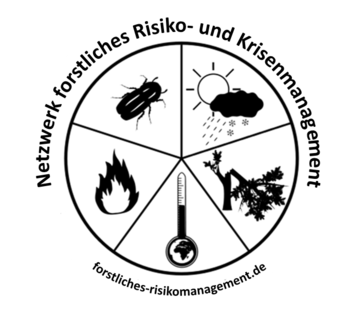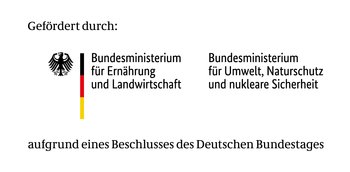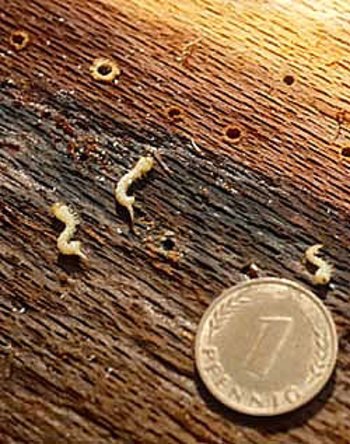Conifer ambrosia beetle (Trypodendron lineatus) and large timberworm (Hylecoetus dermestoides) are particularly important wood boring species. They can do considerable economical damage mostly to stored timber.
The rise in beetle populations over the last years is based on the following factors:
- Due to rising economic pressures and high costs, timber harvesting operations have been rationalised. Modern, close-to-nature forestry practises result in higher amounts of residual and dead wood, an ideal breeding ground and habitat for wood boring insects.
- Timber felled during fall/ winter, (whether by storm or logging) which is not removed but left unprotected in the forest, will be extremely susceptible to infestation due to low wood moisture the next spring. Storm damaged timber which was felled by late winter/ spring storms (e.g. "Wiebke" and "Vivian" 1990) proved to be a lot less susceptible, especially to infestation by early flying species, as it was still too moist.
- Insufficiently irrigated timber in wet storage is also at high risk in spring.
- Insects have developed well during the comparatively warm and dry recent summers. Many species were able to complete more and shorter generation cycles. Trees were under stress and therefore more susceptible to infestation.
General preventive measures
- Removal of (coniferous) timber to a place outside the forest (or into hardwood stands) as quickly as possible during times of insect flying and where infestations have already started.
- Use storage sites free from local insect populations; storage outside of the forest, avoid sites with infestations in the previous year.
- Storage of roundwood: dry storage of debarked timber, wet storage on irrigation sites or conservation under oxygen exclusion.
Protection of individual objects
Apply insecticides which are permitted for use against wood boring insects and labelled "straight after beginning infestation" to protect high-value timber in storage. Limit application to a few exceptional cases based on experiences from the previous year, e.g. for the protection of valuable timbers like oak stems. At the time of writing, the only insecticide approved for use against the large timberworm in Germany is KARATE ZEON by Syngenta. It may be applied to soft- and hardwood as a precautionary measure before the beetles fly. After large-scale calamities like "Lothar", forest enterprises usually reach the upper limit of their organisational, as well as labour, machinery and storage, capacities. Infestations by wood boring insects may not always be prevented. Forest enterprises will have to decide whether to accept considerable economic losses due to the degradation of high quality timber or to take measures to protect and preserve timber quality.
Future prospects
Timberworms can occur on stump and stocks of all managed sites (especially wet and shady sites). They are therefore potentially present almost area-wide. Storms and other large-scale calamities can expand breeding ground capacities dramatically. Therefore the large timberworm will primarily have its highest impact after calamities which bring with them problems with logging and conversion of damaged timber and flooding the timber market. Serious infestation is not to be expected during "regular" logging operations which involve speedy removal of logs.
Guideline for integrated forest protection against wood boring insects
| Aim | Basic principle | Measures | |
| Clean forestry practice |
|
|
|
| Storage of roundwood |
|
|
|
| Infestation monitoring |
|
|
|
| Pheromone traps |
|
|
|
| Insecticides |
|
|
|
Downloads
- Steckbrief Sägehörniger Werftkäfer (Hylecoetus dermestoides)
- Steckbrief Nutzholzborkenkäfer Trypodendron lineatus und Xylosandrus germanus (PDF-Datei, 187 KB)
- Steckbrief Bockkäfer (PDF-Datei, 171 KB)
- Ausfuhr von Pflanzenmaterial in Nicht-EU-Länder: Wer erstellt Pflanzengesundheitszeugnisse?(PDF-Datei, 212 KB)
Forest Crises Management Advisory Guide
Back to the main page of the Forestry Crisis Management Advisor Guide: Overview of the different topic collections
Back to the article overview in the: Storm Topic Collection – Coping with Storm Damaged Timber



